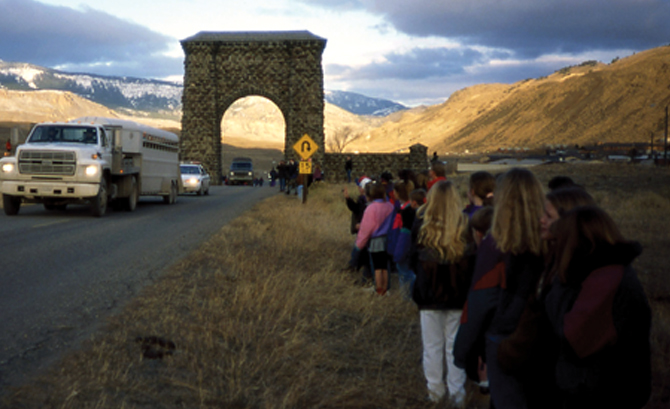
“Wolves arrived in Yellowstone National Park via truck on January 12, 1995,” according to the National Park Service.
As a wilderness outfitter in Wyoming during the past 35 years, I have observed a wide range of wildlife issues throughout the Greater Yellowstone ecosystem. I am proud to call this land my home and work with regional, state and federal officials on wildlife and its habitat. It is especially exciting to see the conservation success of the wolf and grizzly bear recovery efforts under the Endangered Species Act. During the past 20 years the gray wolf has re-established its niche as an essential species here. Likewise, the grizzly bear has slowly rebounded under ESA protection for almost 40 years, despite the pressures of habitat and food declines.
However, some folks seem confused by the facts, because they apparently have already made up their mind. It’s embarrassing that Gov. Mead and other wildlife critics are so uninformed that they allege that wolves are “decimating” the elk, even though science has proven otherwise. The Wyoming Game and Fish Department and other agencies’ data has demonstrated that a sound predator/prey balance has been reached during the past few years. WYGFD even reported that Wyoming elk hunters killed a record number of elk in 2012. Elk hunt annual reports show that favorable conditions, long seasons and the growing elk population all contributed to licensed hunters killing the highest number of elk ever: 26,385 — a success rate of 46 percent.
The report went on to state that elk hunters have killed more than 22,000 elk annually during the past decade in Wyoming. Since wolves have occupied the same elk hunt areas around Yellowstone throughout this same decade, the data demonstrates that wolves and elk are mutually beneficial in their use of this landscape and have actually improved the habitat along their migration routes. Ironically, the wolves may actually save the elk population from a catastrophic collapse when chronic wasting disease reaches this elk-rich area.
The ESA has been good for business as well, as has been demonstrated by the steady increase in visitors and outfitters in Yellowstone National Park. This year tourist numbers reached a new record of more than four million visitors to Yellowstone. During the past two decades since the gray wolf returned in 1995, outfitters like me have been able to operate year around in Yellowstone due to the popular winter wolf and other wildlife watching tours. This is beneficial to the state and local satellite communities’ economies as well. Dr. John Duffield and others report that wolf restoration has produced a $35.5 million annual net benefit to the Greater Yellowstone area. The ESA has been the driving force behind the ecological and economic success story of a healthy, biodiverse, sustainable ecosystem for Wyoming’s wildlife and residents alike.
Taylor: ESA is good for animals, business | Columns | trib.com.